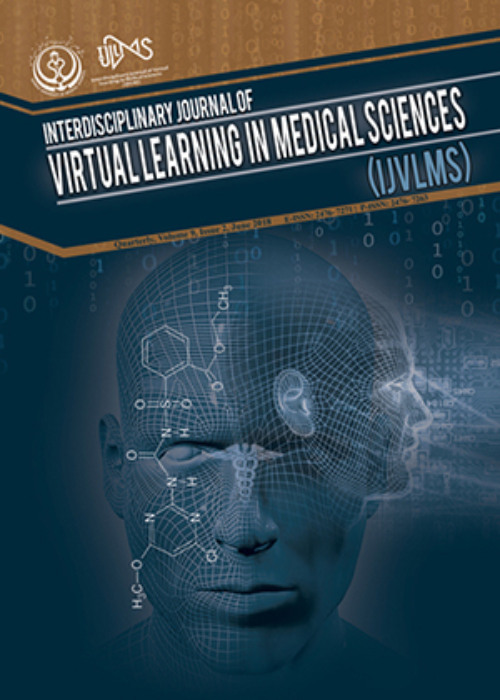Comparing Two Forms of Spatial Contiguity Principle in Student Learning: 'Text Linked to Image' versus 'Text in Image Adjacency'
Author(s):
Article Type:
Research/Original Article (دارای رتبه معتبر)
Abstract:
Background
Using links to provide additional audio or video content can enhance learners’ engagement with the learning content and keep them active in the learning process. This study aimed to compare the impacts of two different forms of multimedia presentation, namely ‘text in image adjacency’ and ‘text linked to image’, on learning and learning retention in a course entitled the Sciences. Methods
This was a randomized trial research. Multi-stage cluster sampling method was used to select 31 fourth grade elementary school students in Malayer (Iran) in the 2014-2015 academic year. They were randomly assigned to control (N=15) and intervention (N=16) groups. Three researcher-made achievement tests (pre-test, post-test, retention test) were used to collect data. The expert opinions of seven teachers were consulted to assess the validity of the questions and the CVR of their opinions was found to be 98%. The reliability was determined using Cronbach’s alpha as well as the raters’ opinions, and the coefficients stood at 73%, 85%, and 60%, respectively. Also, Multimedia software was used to prepare the content of chapter 12 (Circulatory System) for the experiment. It was presented to the students in two forms: text linked to image (hidden hyperlink) and text in image adjacency. The control group was provided with text in image adjacency and the intervention group with text linked to image (hidden hyperlink). Data were analyzed using Kolmogorov-Smirnov, repeated measures ANOVA, F, and ANCOVA tests in SPSS 19 software. Results
The research findings showed that in the group in which multimedia content was presented with text linked to image, learning scores significantly increased from (5.28±3.74) in the pre-test to (11.36±3.98) in the post-test and (12.40±4.44) in the retention test (P=0.001). Also, in the control group receiving multimedia content in the form of text in image adjacency, learning values also significantly increased from (3.70±3.64) in the pre-test to (10.46±4.77) in the post-test and (12.60±3.62) in the retention test (P=0.001). However, there was no difference between the intervention and control groups in terms of learning gains (F(1, 27)=.014, P=0.906). Similarly, no significant difference was found between the two groups in terms of learning retention (F(1, 24)=0.292, P=0.594). Conclusion
The present study demonstrated that a new form of spatial contiguity (i.e., text linked to image via hyperlinks) is as effective in learning as presenting textual content in image adjacency. Therefore, this is a new finding contributing to the development of spatial contiguity principle.Keywords:
Language:
English
Published:
Interdisciplinary Journal of Virtual Learning in Medical Sciences, Volume:11 Issue: 2, Jun 2020
Pages:
84 to 91
magiran.com/p2148095
دانلود و مطالعه متن این مقاله با یکی از روشهای زیر امکان پذیر است:
اشتراک شخصی
با عضویت و پرداخت آنلاین حق اشتراک یکساله به مبلغ 1,390,000ريال میتوانید 70 عنوان مطلب دانلود کنید!
اشتراک سازمانی
به کتابخانه دانشگاه یا محل کار خود پیشنهاد کنید تا اشتراک سازمانی این پایگاه را برای دسترسی نامحدود همه کاربران به متن مطالب تهیه نمایند!
توجه!
- حق عضویت دریافتی صرف حمایت از نشریات عضو و نگهداری، تکمیل و توسعه مگیران میشود.
- پرداخت حق اشتراک و دانلود مقالات اجازه بازنشر آن در سایر رسانههای چاپی و دیجیتال را به کاربر نمیدهد.
In order to view content subscription is required
Personal subscription
Subscribe magiran.com for 70 € euros via PayPal and download 70 articles during a year.
Organization subscription
Please contact us to subscribe your university or library for unlimited access!




